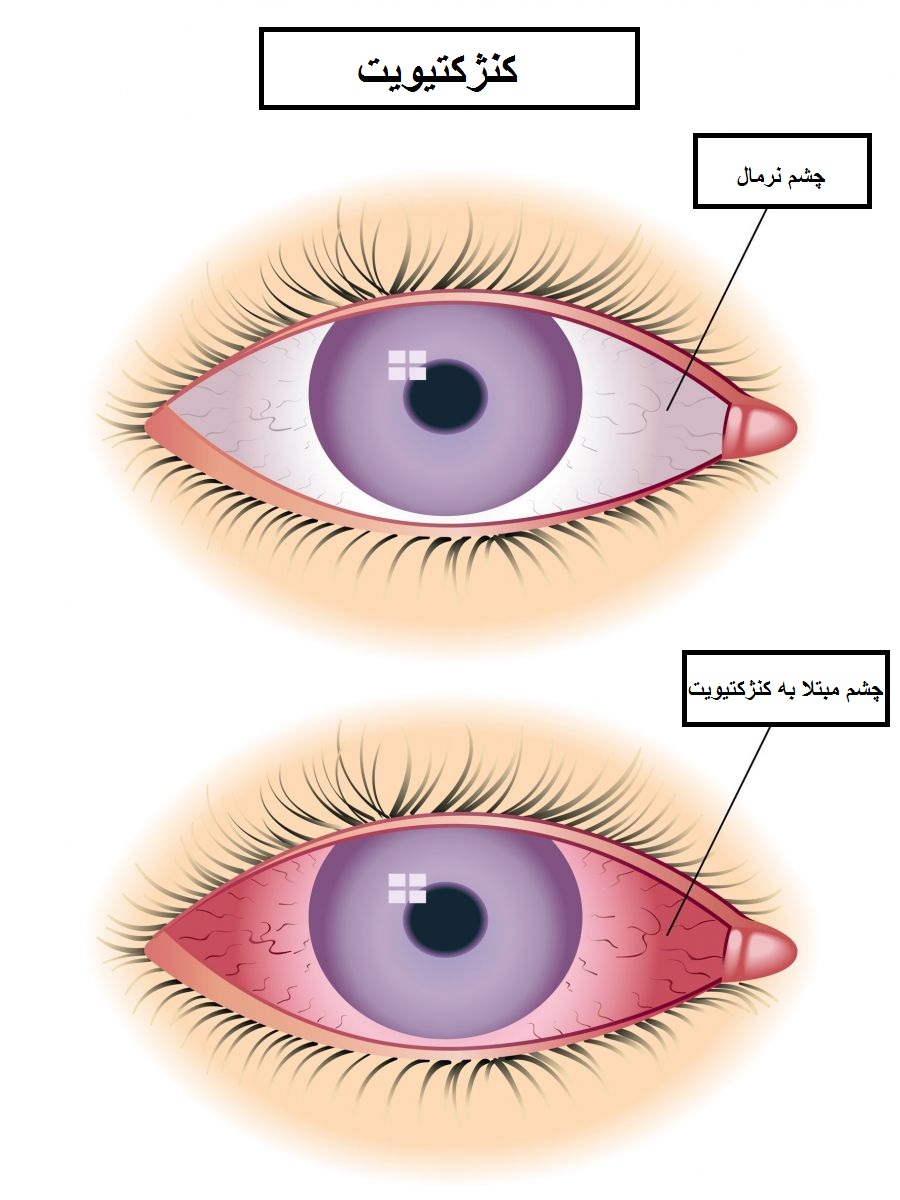Conjunctivitis
Conjunctivitis or eye redness is an eye membrane inflammation that occurs due to infectious or non-infectious reasons.

Types of conjunctivitis
Eye redness in conjunctivitis, allergic conjunctivitis is the most common type among non-infectious types. This problem is also seen in people with seasonal allergies and may also be due to sensitivity to substances such as cosmetics, perfumes, or medications. This type of conjunctivitis is not contagious.
Signs and symptoms of conjunctivitis
Red eye is the most prominent symptom of conjunctivitis due to inflammation.
Signs of various types of conjunctivitis
Allergic conjunctivitis: It engages both eyes and causes itching and redness with eyelid inflammations. The patient may also suffer with runny nose due to sensitivity.
Viral conjunctivitis: It usually starts with engaging one eye and may eventually engage the other eye. Other symptoms include intense tear shed, watery discharge, and eye reddening.
Bacterial (microbial) conjunctivitis: Engages both eyes and causes a thick secretion, which may stick eyelids to together, especially when waking up.
Other symptoms include conjunctival swelling, redness and eye watering. This type of conjunctivitis usually first involves an eye but is simply transmitted to the other eye.
Diagnosis
Using a Slit Lamp, conjunctivitis is usually diagnosed in a simple ophthalmic examination.
Prevention
ince different types of viral and bacterial conjunctivitis are contagious and easily transmitted, prevention plays a major role in preventing the transmission of contamination to the eyes of the patient as well as other people.
Washing hands regularly, avoiding rubbing the eyes, not sharing towels, not sharing cosmetics, not sharing eye drops, not swimming (some bacteria can be transmitted through water), not re-using paper tissues to clean eyes can help prevent the spread of disease.

